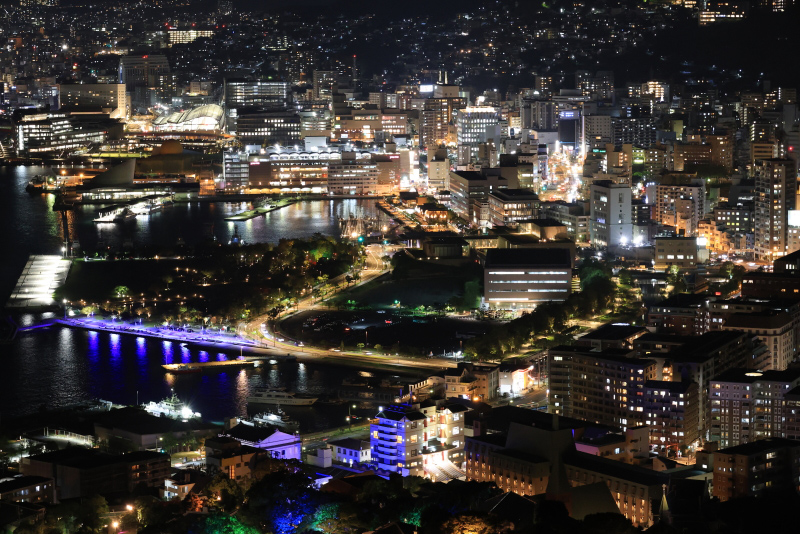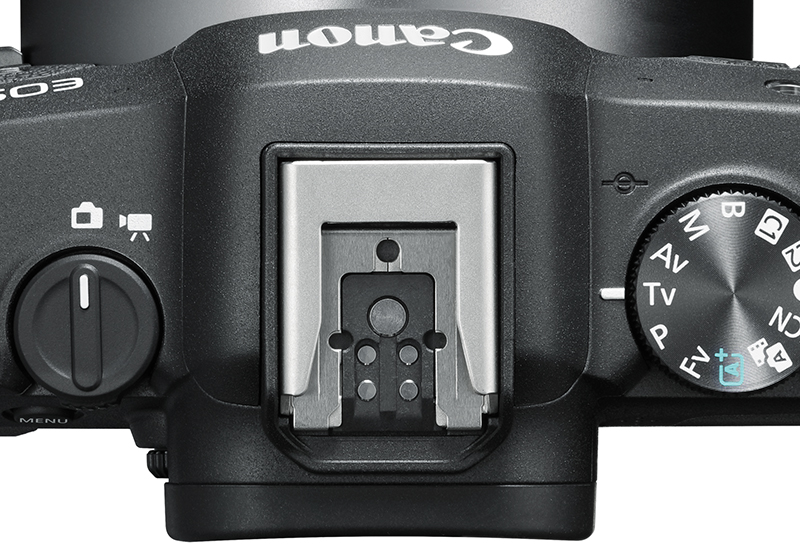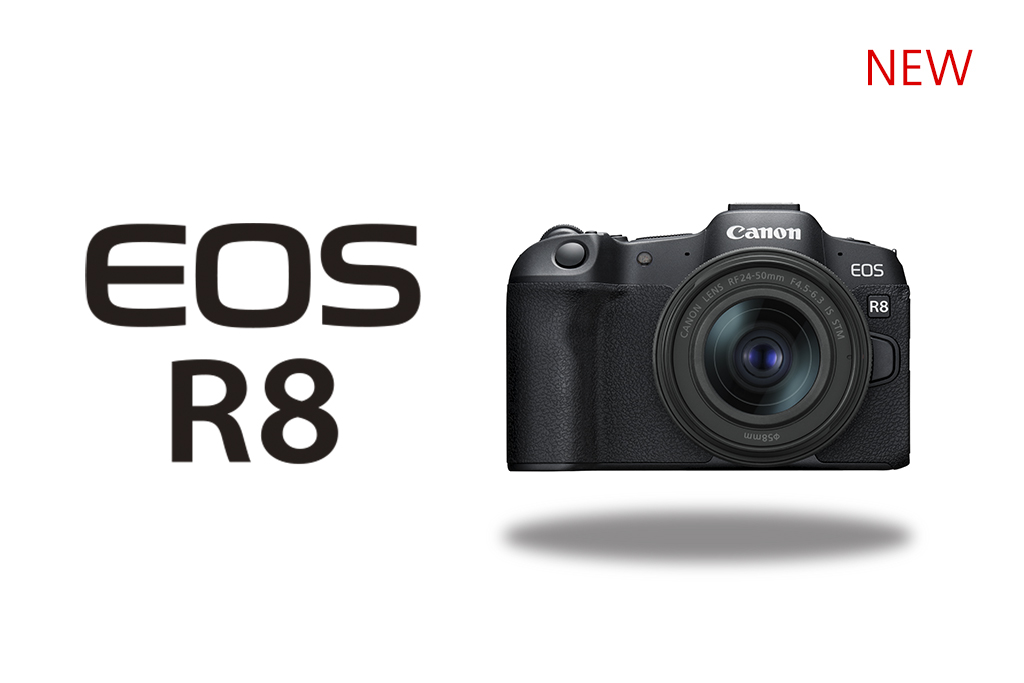8+ Reasons to Consider the EOS R8 for Content Creation
On 8 February 2023, Canon announced the EOS R8 , a new entry full-frame camera for its EOS R-series mirrorless camera line-up. Compact and lightweight due to simpler controls and a smaller battery, it is similar in size and positioning as the EOS RP. At the same time, it also bears the same powerful basic functions as the second-generation EOS R system cameras, such as advanced video capabilities, high-speed continuous shooting, and deep learning technology-based subject detection and tracking. It promises a smaller, more affordable full-frame option to content creators, new full-frame camera users, and existing EOS R system users looking for a second full-frame body.
EOS R8 at a glance: Key specifications in brief
-
24.2-megapixel full-frame image sensor
-
DIGIC X image processing engine
- Subjects detected: People, animals (dogs, cats, birds, horses), vehicles (cars, motorcycles, trains, aeroplanes) -
Cropless 6K-oversampled 4K UHD 60p video
-
Canon Log 3, HDR PQ, and High Frame Rate Full HD 180P
-
Up to 40 fps high-speed continuous shooting (electronic shutter)
-
Compact and lightweight: Similar in size to EOS RP
1. Beautiful full-frame image quality right out of the box
1. Beautiful full-frame image quality right out of the box
Why do so many photographers and content creators like using full-frame cameras, especially if image quality is a huge consideration?
This is because when image quality is concerned, (sensor) size matters. As many as 7 times larger than the 1-inch sensor on many of the latest smartphones, the full-frame image sensor on cameras like the EOS R8 offers several visible benefits. Regardless of whether you are shooting photos or video, you get great full-frame image quality—and the versatility that it offers—right out of the box.
3 advantages of a full-frame image sensor
1. Beautiful bokeh
EOS R8 + RF85mm f/2 Macro IS STM @ 85mm/ f/2
Creamy backgrounds that make the subject pop and huge, round defocused “bokeh balls” are easier to create because when shooting with the same angle of view, a larger image sensor helps to produce a shallower depth of field.

2. Make the most of wide-angle lenses
EOS R8 + RF15-30mm f/4.5-6.3 IS STM @ 15mm/ f/8
Full-frame cameras capture the full angle-of-view of the image projected by a wide-angle lens, retaining their “wide” feel. Smaller sensors crop away the edges, which makes the image look less wide.

3. Clean high ISO speed images
EOS R8 + RF24-105mm f/4-7.1 IS STM @105mm / f/8/ ISO 8000
Each individual image sensor pixel is larger and can take in more light, resulting in cleaner, clearer images with less noise (“graininess”) when shooting at a high ISO speed at night.
Learn more about the differences between a full-frame and APS-C camera in:
Full-Frame vs APS-C Camera: Which Should I Choose?
2. The video specs you need to push footage to its limits
2. The video specs you need to push footage to its limits
The EOS R8 is equipped with multiple recording modes and options that cater to different project and workflow requirements.
Oversampled 4K video
For projects that require 4K, the EOS R8 is capable of shooting cropless 4K UHD 60p video oversampled from 6K data captured from the full width of its 24.2-megapixel image sensor. Oversampling processing produces higher quality 4K video that is clearer with fewer artefacts. Whatever your editing plans for raw footage, you know you’re starting on a clean base!
Also, see:
Videography FAQ: What are 8K, 4K, and Full HD? How Do I Use Them?
Canon Log 3 and HDR PQ at 10-bit YCbCr 4:2:2: High dynamic range options for professional workflows
Besides the usual 8-bit YCbCr 4:2:0 recording, the EOS R8 can also record Canon Log 3 and HDR PQ video at a higher colour depth of 10-bit YCbCr 4:2:2. Both formats enable the production of high dynamic range (HDR) footage: HDR PQ “bakes in” the extra detail, allowing the wider dynamic range to be visible on HDR-ready displays with minimal post-production, whereas Canon Log 3 provides more flexibility for colour grading.
What does “10-bit YCbCr 4:2:2” mean? Unravel the code in:
Videography FAQ: What is Bit Depth? How Does It Affect My Video?
Videography FAQ: What do 4:2:2 and 4:2:0 mean?
Dramatic slow motion at 1/6 speed: High Frame Rate video at Full HD 180p
For scenes where you want to change the pace and add some drama to the action, the EOS R8 supports Full HD shooting at up to 180 frames per second (180p). This lets users create seamless slow-motion videos that are 6x slower when played back at 30p.
Other useful features
- Movie pre-recording
Records the moments right before you press the REC button. You can set the pre-recording duration as 3 or 5 seconds.
- Focus breathing correction
This is a new feature that uses optical design values to correct the unwanted fluctuations in the angle of view that occur during focusing.
3. Canon’s lightest full-frame mirrorless body
3. The lightest full-frame body in Canon’s current EOS R line-up
Weighing only around 461g, the EOS R8 is currently the lightest full-frame camera in Canon’s EOS R series. It is over 300g lighter than the EOS 6D Mark II (approx. 765g), Canon’s lightest full-frame DSLR, and lighter than even the EOS RP (approx. 485g). It also makes a compact combination with the RF24-50mm f/4.5-6.3 IS STM (approx. 210g). In fact, at approximately 671g, the EOS R8 and RF24-50mm f/4.5-6.3 IS STM setup is lighter than even the EOS R5 alone!
Such portability makes it easier to make the most of that unique full-frame quality, whether you’re exploring the streets, shooting everyday moments, or trying out different camera movements to enhance your video storytelling.
4. Up to 40 fps continuous shooting
4. Still shooting performance almost on par with the EOS R6 Mark II
For creators also keen on photography, the EOS R8 has rather powerful still-shooting specifications too. It has the same image resolution and burst capabilities as the more advanced EOS R6 Mark II: a 24.2-megapixel full-frame image sensor, DIGIC X image processing engine, and continuous shooting speeds that go up to 40 fps (with AF/AE) in electronic shutter mode*.
Other similarities include:
- Fastest shutter speed of up to 1/16,000 sec** (electronic shutter), 1/4000 sec (electronic first curtain shutter)
- RAW burst mode, which supports pre-recording of the moments right before shutter release.
* The actual continuous shooting speed depends on various factors such as battery type/remaining charge, temperature, built-in Wi-Fi (‘On’ or ‘Off’), flicker reduction, shutter speed, aperture value, type of lens, etc. For more information, please refer to the user manual.
** Flash photography is not supported in electronic shutter mode. Rolling shutter distortion may occur for certain subjects/shooting conditions.
5. Seamless subject detection, tracking, and focusing
5. Seamless subject detection, tracking, and focusing
Whether you are shooting stills or video, nailing the focus can make the crucial difference between an amazing shot and one that has to be trashed. Nail it on the spot in-camera with the EOS R8’s powerful subject detection, tracking, and autofocus (AF capabilities). They work together to find, lock on, and keep the focus on subjects so that you can leave the focusing to the camera and concentrate on the creative aspects.
EOS iTR AF X: Advanced subject detection and tracking based on deep learning technology
The EOS R8’s DIGIC X processor is equipped with the circuitry required to process deep learning algorithms. This enables it to support the EOS iTR AF X system, which conducts advanced subject detection and tracking based on deep learning technology during both still and video shooting.
What subjects can the EOS R8 detect?
|
|
|
|
| People | People | Eyes (left/right priority)/ Face/ Head/ Torso |
| Animal | Dogs, cats, birds, horses | Eyes (left/right priority)/ Face/ Torso |
| Vehicle | Motorsports (Cars, motorcycles) |
Vehicle body/ Helmet |
| Trains | Whole body/ Front carriage | |
| Aeroplanes, helicopters |
Full body/ cockpit | |
| Auto | All the above | All the above |
Users can set the camera to prioritise either the left eye or the right eye of a person or animal. The Subject Detection (auto) mode also automatically detects people, animals, or vehicles in the frame. If there are multiple subjects detected, the camera selects the one most likely to be the main subject by using contextual details such as the composition and subject type.
The EOS R8’s basic subject detection capabilities are equivalent to the EOS R3. Learn more about it in:
Subject detection via deep learning; tracking via EOS iTR AF X
Dual Pixel CMOS AF II: Focus on subjects quickly and accurately
The EOS iTR AF X subject detection and tracking system works closely with the Dual Pixel CMOS AF II system to acquire focus. Under Dual Pixel CMOS AF II, every single pixel on the image sensor is equipped with two photodiodes to perform both imaging and phase difference detection. This achieves high image quality and high-precision autofocusing without any pixel interpolation.

AF can be conducted over up to 100% of the image frame (horizontal x vertical, in Whole Area AF mode when a subject is detected). With AF operating over up to 1053 finely divided zones, supported by the advanced subject detection and tracking abilities of EOS iTR AF X, you can expect accurate focusing right up to the edges of the image.
Touch & drag AF: Use the touchscreen for AF control

When Touch & Drag AF is enabled, you can easily drag your finger across the touchscreen monitor to move the AF area while looking through the viewfinder. Control is intuitive: the AF frame will move relative to the direction you drag. If there are two or more subjects detected in the image, simply tap the touchscreen to change the subject that is in focus.
6. Cool, convenient features that aid creative expression
6. Cool tools that make creative expression a breeze
Want to add different visual effects to your photos quickly and easily? The EOS R8 has creative features that make it easy to get creative with image-making, even if you’re not familiar with camera functions. Enjoy the best of both worlds: full-frame image quality and creative ease!
HDR shooting
This mode reduces blown highlights and crushed blacks in scenes with heavy contrasts, providing an HDR image with tones and brightness closer to what our eyes see. Besides the conventional HDR mode, which merges three shots taken at different exposures, there is the new moving subject priority mode that achieves HDR effects with 1 shot. The HDR PQ HEIF mode is also supported.
Focus bracketing and in-camera depth compositing
Ideal for achieving deep focus during scenes with greater special depth, such as landscape and macro photography, where elements remain out of focus even with a narrower aperture setting. Focus bracketing takes multiple shots of the scene with different focus positions, and in-camera depth compositing merges these shots in-camera to achieve a sharper overall image.
High-resolution panoramas (Panorama Shot mode)
This Special Scene mode takes full-resolution shots at up to 5 fps as you pan the camera vertically or horizontally, and then stitches them in-camera to form an ultra-high-resolution panorama. It can merge as many as 200 shots.
13 Special Scene modes
Not sure about the best settings to use and need a quick solution? Simply choose the mode that matches your scene, and let the camera select the settings for you.
Modes include:
Portrait Mode / Group Photo Mode / Landscape Mode / Panoramic Shot Mode / Sports Mode / Kids Mode / Panning Mode / Close-up Mode / Food Mode / Night Portrait Mode / Handheld Night Scene Mode / HDR Backlight Control Mode / Silent Shutter Mode
Digital teleconverter

The digital teleconverter function digitally processes the image to achieve an angle of view that is equivalent to 2x or 4x the focal length, capturing areas that are half or a quarter of the original image respectively. These images are then digitally rescaled to the recording size, so that if the camera was set to record L-sized (6000×4000) JPEG, the digitally teleconverted images will also be in L size(6000×4000)*.
*The image quality will be reduced because the image is enlarged and recorded. JPEG shooting only. The AF frame is fixed at the centre point.
10 Creative filters
These let you add a unique flavour to your pictures.
Creative filters include:
Grainy B/W / Soft focus / Fish-eye effect / Water painting effect / Toy camera effect / Miniature effect / HDR art standard / HDR art vivid / HDR art bold / HDR art embossed
Others
- Multiple exposures mode
- Interval timer: ideal for creating timelapse videos
- Bulb timer: for long exposures
7. Wireless smartphone file transfer, plug & play USB-C livestreaming
7. Easy connectivity: Camera Connect; plug & play livestreaming through USB-C
Canon Camera Connect Ver.3
Excited to share your latest photos or videos? You can do so on the go. The EOS R8 is equipped with Wi-Fi/Bluetooth functionality that supports the 2.4GHz IEEE802.11b/g/n band, letting you wirelessly transfer video files and JPEG images to your smartphone via the Camera Connect smartphone app. From there, you can edit your content to taste before posting it on social media. Prefer wired connections? You can also connect your camera and smartphone with a USB-C cable.
The Camera Connect app also has a remote Live View shooting function. This lets you preview the image and even change some shoot settings before releasing the shutter!
UVC/UAC support: Plug & play livestreaming through just one USB-C connection

Using your camera to livestream or conduct online meetings has never been easier. The EOS R8 supports UVC (USB Video Class) and UAC (USB Audio Class) protocols, so you can transmit high-quality video and audio from camera to computer with just one USB-C cable. It’s plug and play, so no prior driver installation is needed. One more way to take full advantage of those full-frame capabilities!
8. Dust- and drip-proof design for durability outdoors
8. Dust- and drip-proof design: Sufficient durability for outdoor shooting
The EOS R8 has a polycarbonate resin exterior and sturdy magnesium alloy (partially aluminium alloy) chassis with excellent heat dissipation capabilities, helping it to achieve reliability within a lightweight body. Its electronically-controlled focal-plane shutter has shutter durability of approximately 100,000 cycles with the electronic first-curtain shutter. These, together with its dust- and drip-proof structure, contribute to a durable body that supports shooting in various environments.

Battery life
To enable its compact, lightweight design, the EOS R8 uses the smaller LP-E17 battery, whichis the same as the EOS RP and other entry-level EOS DSLR cameras. In power saving mode, it shoots up to around 220 shots when using the EVF, and around 370 shots when using the rear LCD monitor—enough for a day’s use by the average user. The camera has a USB Type-C (USB 3.2) terminal, which supports USB charging and power supply with a USB cable.
Under normal circumstances, up to approximately 2 hours of video shooting is possible, excluding cases where recording stops due to excessive heat or other issues. With High Frame Rate recording reduces the recording duration to 20 minutes (180p/150p) and 30 minutes (120p/100p).
9. Other notable features
High-definition EVF

The 0.39-inch, 2.36 million dot OLED EVF provides 100% coverage with approximately 0.7x magnification. It supports a display refresh rate of up to 119.88 fps*. OVF View Assist, which uses HDR technology to provide a view that resembles that through an optical viewfinder, is also supported.
*At this rate, display might not be smooth.
Multi-Function Shoe

The EOS R8 has the same Multi-Function Shoe as the EOS R3/R5 C/R6 Mark II/R7/R10, which supports various compatible new accessories such as the Directional Stereo Microphone DM-E1D.
Lens options: RF, RF-S/EF, EF-S lenses

The EOS R8 takes all RF and RF-S lenses* directly without an adapter, and EF/EF-S lenses through the Mount Adapter EF-EOS R. When a lens designed for APS-C cameras (EF-S, RF-S) is attached, the 1.6x crop mode will automatically be activated, and the EVF and Live View displays will show the cropped angle of view.
*Except for RF5.2mm f/2.8L Dual Fisheye
Extension Grip EG-E1 (sold separately)

The EOS R8’s small size makes it extremely portable, but users with larger hands may prefer a larger grip for a better hold. Consider getting the Extension Grip EG-E1, which is also compatible with the EOS RP.
Should you keep using your EF/EF-S lenses with your new EOS R system camera, or switch to RF/RF-S lenses? Find out about the pros and cons in:
RF Lenses vs EF Lenses: What's the Difference and How to Decide?
EOS R8: Sample images
EOS R8/ RF24-50mm f/4.5-6.3 IS STM / FL: 24mm / Manual exposure (f/8, 1/80 sec)/ ISO 400/ WB: Auto
EOS R8/ RF85mm f/2 Macro IS STM / FL: 85mm/ Manual exposure (f/2, 1/400 sec)/ ISO 200/ WB: Auto
EOS R8/ RF35mm f/1.8 Macro IS STM/ FL: 35mm/ Manual exposure (f/1.8, 1/500 sec)/ ISO 100/ WB: Auto












































